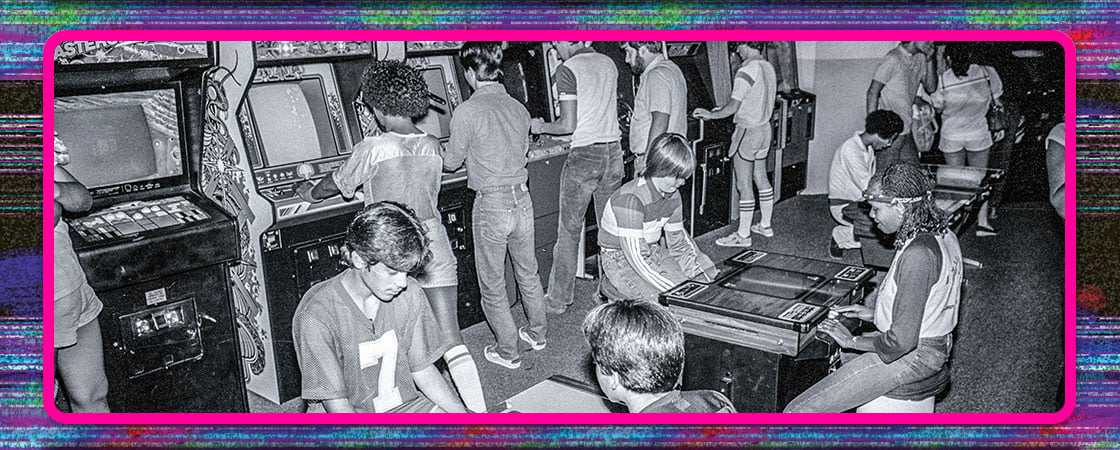Today, we can play video games almost anywhere—in our rooms, on park benches, at bus stops. And the people we play with don’t need to be sitting next to us. In fact, they don’t even need to be in the same country as us. But back in the early 1980s, if you wanted to play video games with your friends, you probably went to an arcade. (There were home gaming consoles, but at the time, arcade games tended to be more fun.)
Arcades were incredibly popular, especially among kids and teens. In an arcade, there might be dozens of games lined up side by side, each one housed in a “cabinet.” The games were coin-operated, which meant you needed quarters to play them. Aside from the offerings of a vending machine, no food was served. After all, you did not go to an arcade to eat—you went there to play.
The goal of early arcade games was simple: Score points. You and your friends would wait in line to play your favorites, competing for the highest scores. Top scorers were immortalized on what were known as leaderboards. Seeing your name take the number 1 spot? That was the ultimate triumph.
By today’s standards, early arcade games were pretty basic, with minimal graphics and simple sound effects. But people couldn’t get enough. They loved shooting space rocks in Asteroids, hitting the ball back and forth across the screen in Pong, and gobbling up dots while trying to outrun hungry ghosts in Pac-Man.
By 1981, thousands of arcades dotted America. The video game business had exploded into an $8 billion industry—the equivalent of about $22 billion today.
Little did anyone know that the world of video games was on the brink of disaster.

